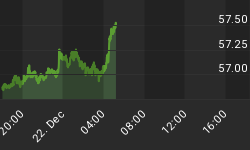What’s next for gold? Seems like a fairly simple question. Unfortunately, it is nearly impossible today to get a simple answer. That’s the problem.
Why is that? And, if we can find a simple, straight-forward answer, how do we know the answer is correct?
Perspective and intent are factors. But so are logic and accuracy.
It is likely, though, that most people who ask the question, “What’s next for gold?”, are generally inquiring about its price. In other words, what will the price of gold be next week? next month? next year? And – generally speaking – advisors, analysts, and others try to answer accordingly.
But logic and accuracy are extremely critical. And if one is a short-term trader, timing becomes just as important. A quick, upward or downward movement of fifty dollars per ounce, with proper timing, can be very profitable – or not – to a trader or speculator.
When one is focused on the price of gold, there is a tendency to overlook its true value. Discrepancies between prices and fundamental values occur often but are eventually resolved. In other words, prices and values seek and find equilibrium. Insofar as gold is concerned, the yellow metal was overpriced in August 2011 at $1900.00 per ounce. And it was underpriced in December 2015 at $1040.00 per ounce. Price and value for gold are currently at equilibrium.
That means that a gold price within its current range of $1200-1300.00 per ounce represents fair value. More specifically, $1250.00 per ounce is consistent with the decline of over ninety-eight percent (98.25%) in the dollar’s value since 1913.
So what’s next for gold?
We can answer the question very simply by changing one word. Ask instead “What’s next for the U.S. dollar?”
Answer that question and you will know what to expect regarding the price of gold.
The U.S dollar is a substitute for gold (i.e. real money). The price of gold is an inverse reflection of the changing value of the U.S. dollar. The ongoing, never-ending deterioration of the dollar’s value means ever rising gold prices over time.
If you think the U.S. dollar will increase its rate of decline, you will want to make sure your net worth includes substantial holdings of physical gold.
If, on the other hand, you expect a stable or stronger dollar, at least for the next few years, then gold won’t hold the same appeal. Its price would remain relatively stable or even decline as the dollar strengthens temporarily. This is epitomized by the scenario we have witnessed since gold’s high in August 2011 at close to $1900.00 per ounce.
Unfortunately, the cumulative effects of the Fed’s intentional inflation have left the dollar in an unusually precarious position. Any strength/stability in the dollar is relative to how bad things were most recently. And it is increasingly vulnerable to extreme volatility.
While there are some very interesting, and logical sounding analyses of gold, the majority of them are not helpful for the purpose of understanding gold. For the most part, they actually create confusion and lead to unrealistic expectations.
Calculations and predictions for the price of gold based on assumptions of correlation and causal factors are fundamentally flawed.
Gold’s price is not an indication of its value. Its price is a reflection of the value of the U.S. dollar. As the dollar continues to lose value, gold continues to rise in price.
Since the inception of the Federal Reserve in 1913, the U.S. dollar has lost more that ninety-eight percent of its value. Gold has reflected the decline of the U.S. dollar in its price increase from $20.00 per ounce in 1913 to $1270.00 per ounce currently. That is an increase of more than sixty fold.
The case for gold is not about price. It is about value. Gold is original money and a store of value. And its value will become readily apparent when governments and individuals are scrambling amid the ruins of our financial system looking for something, anything, to replace worthless paper currencies, which are nothing more than substitutes for real money.
In the meantime, accumulating physical gold for your own financial survival might be a good idea.















